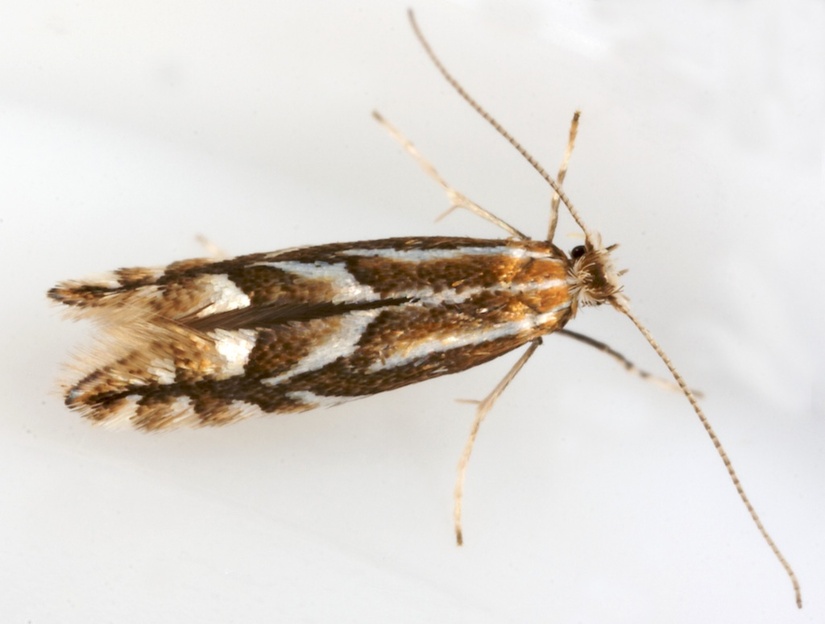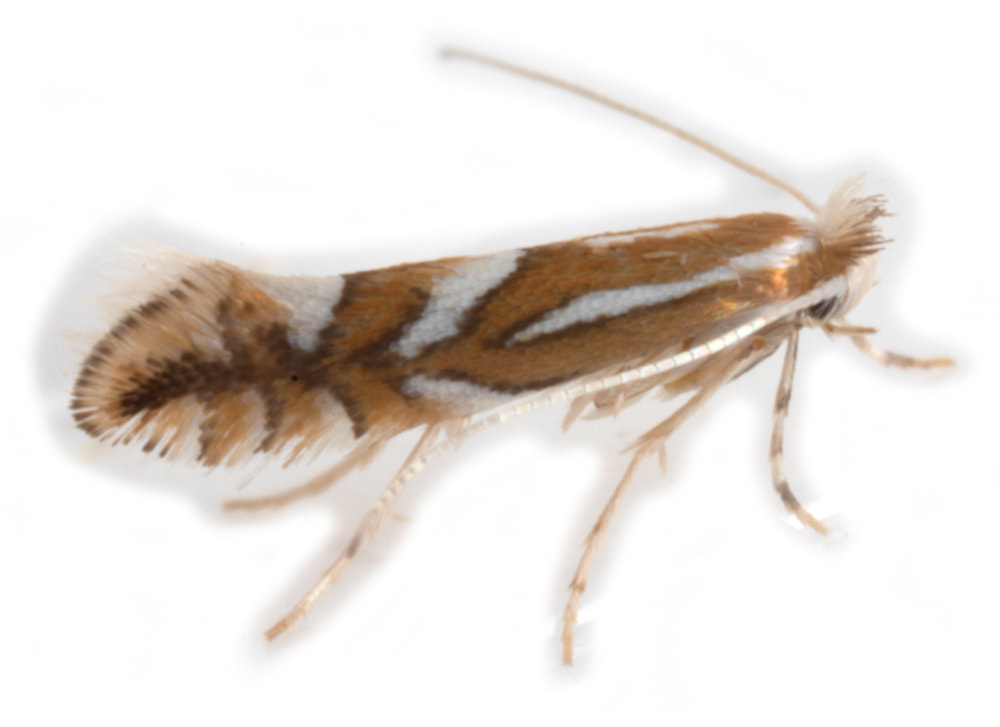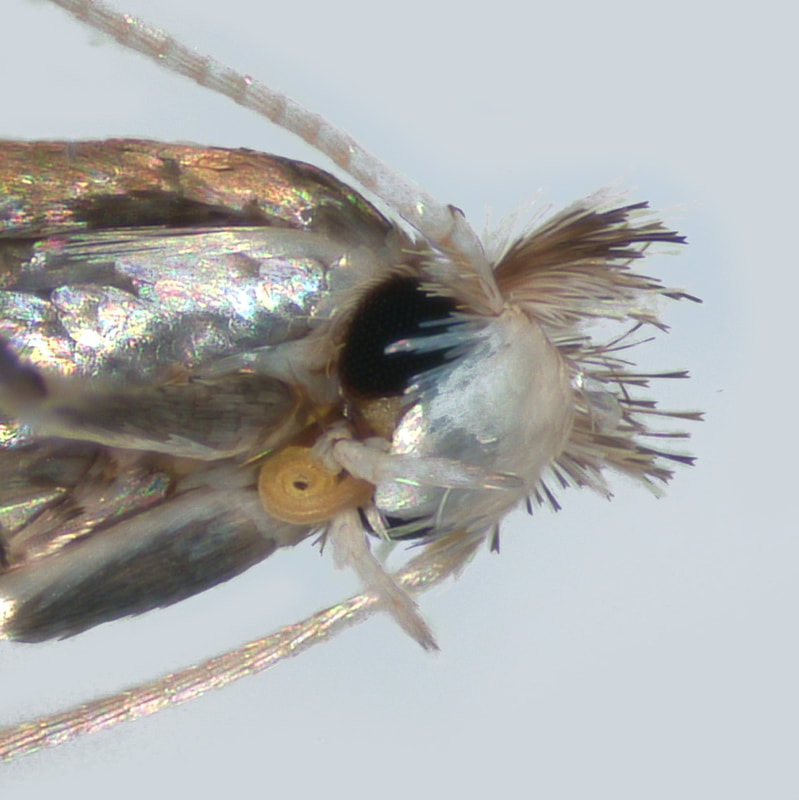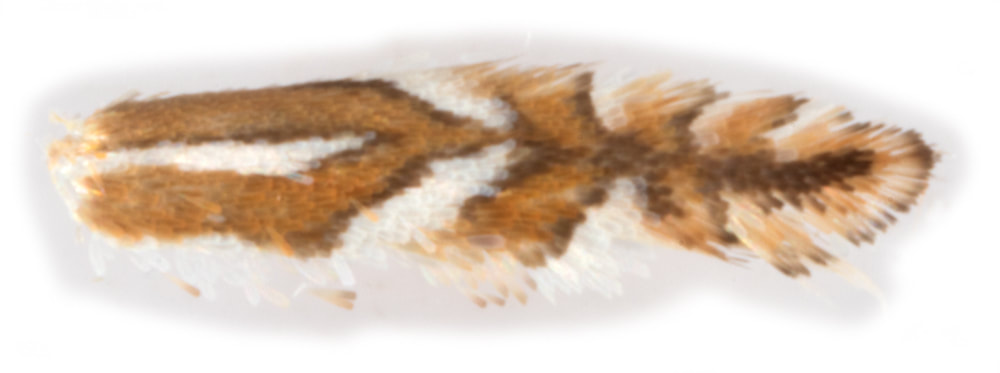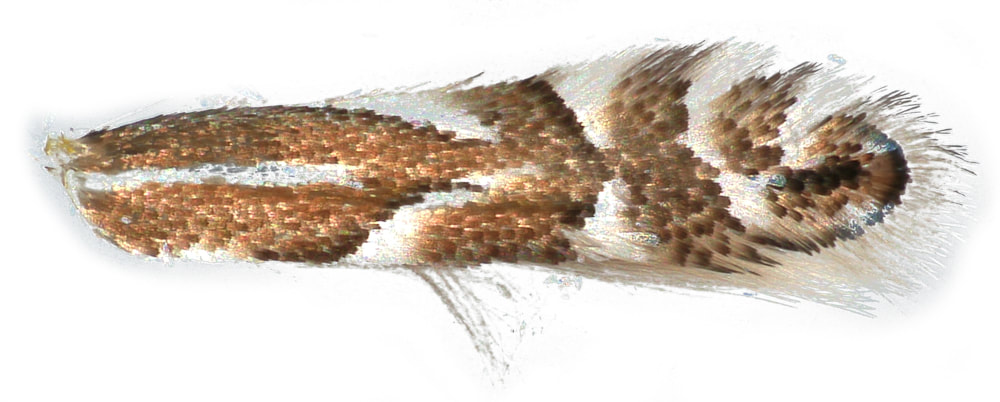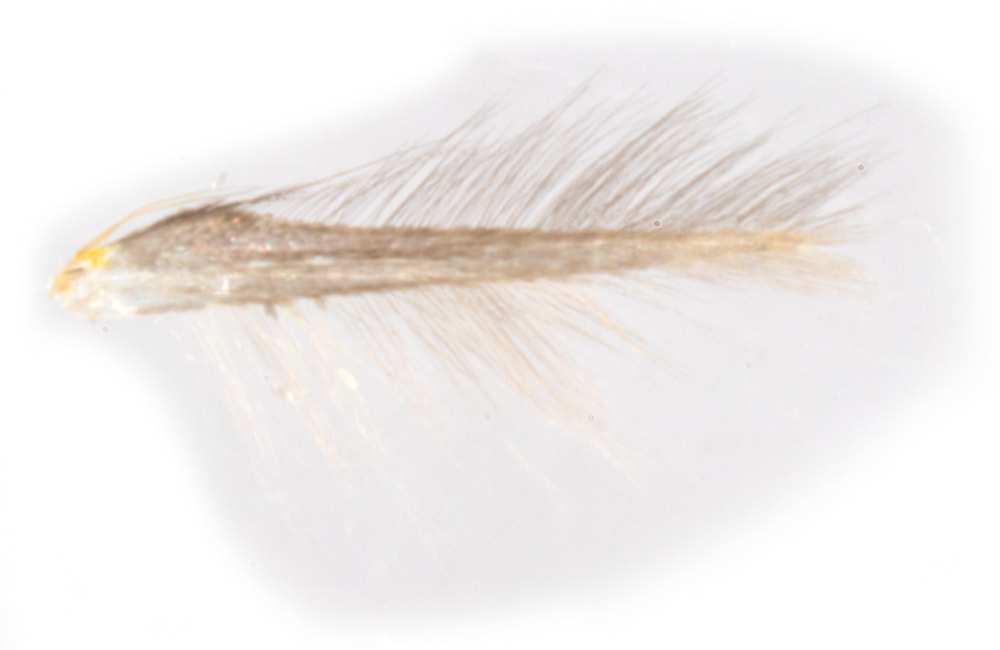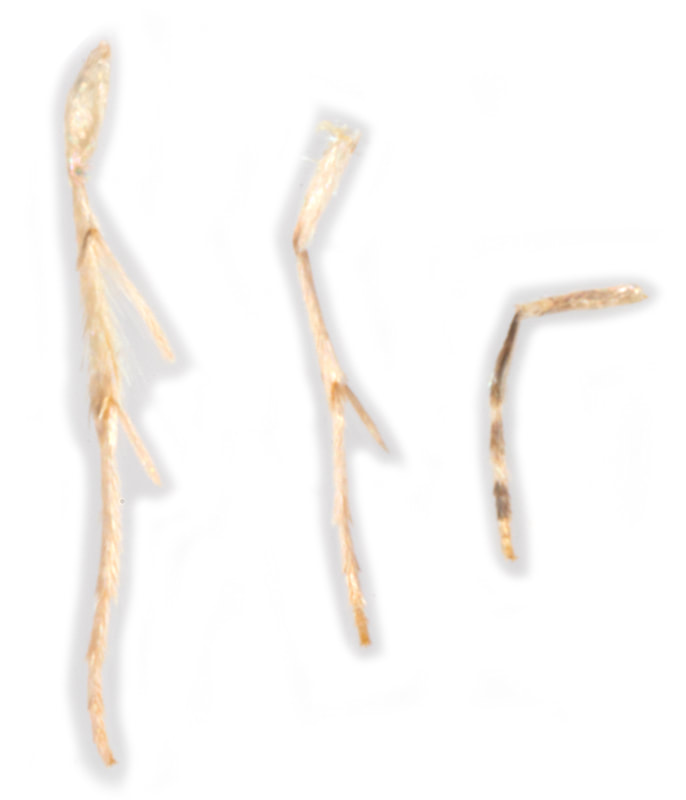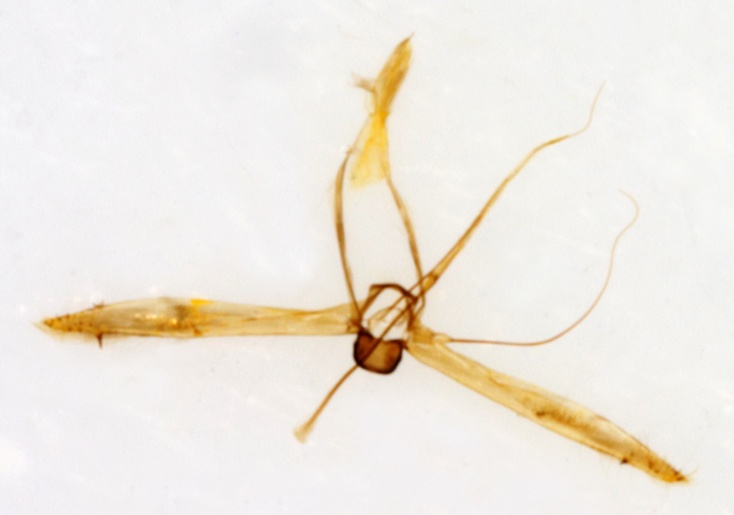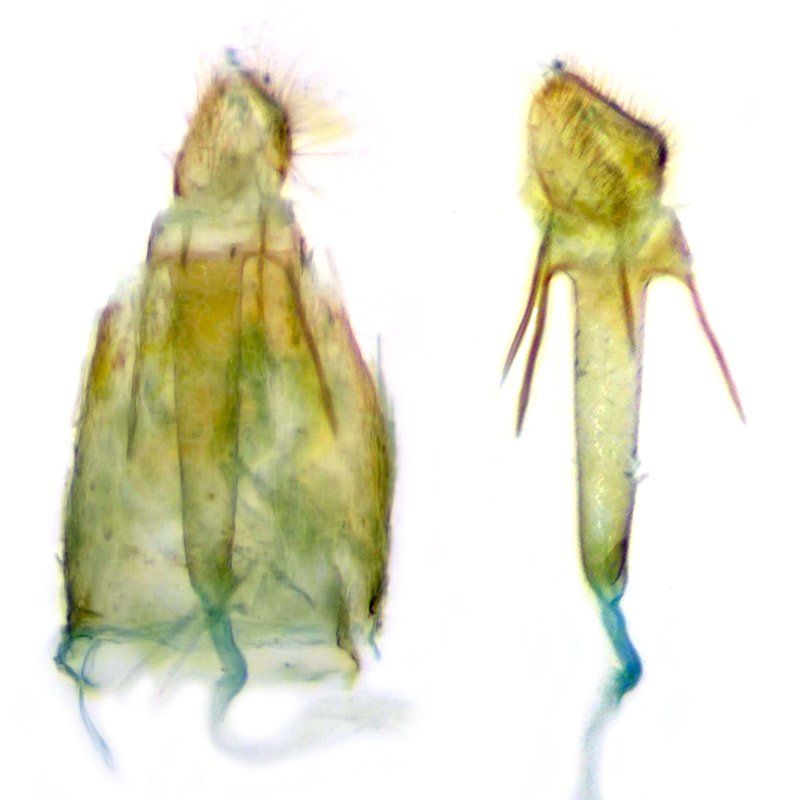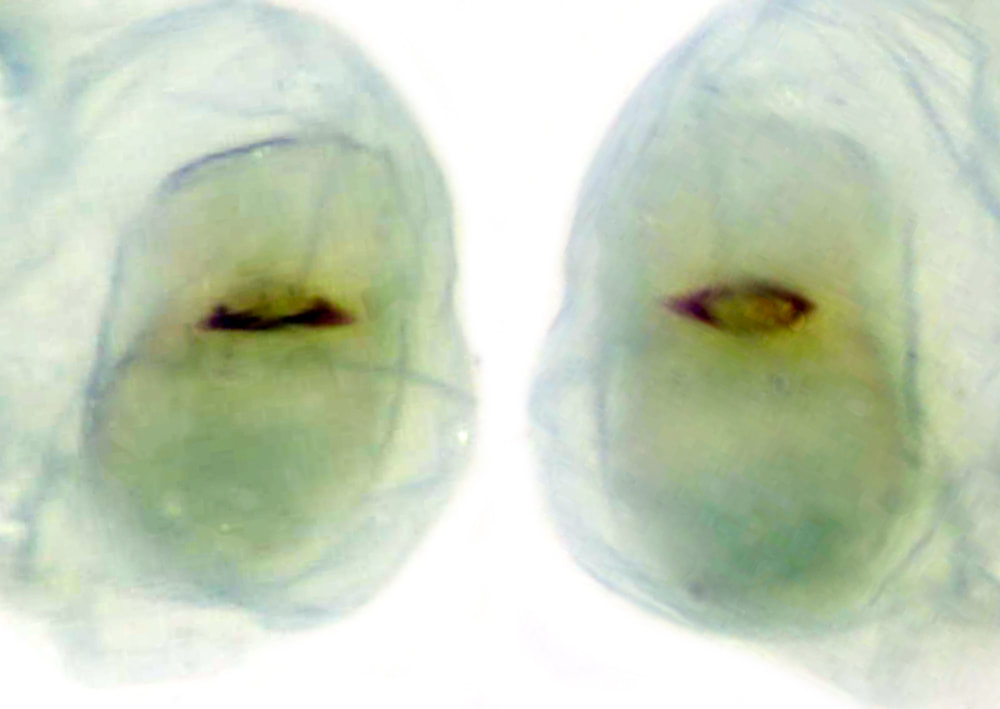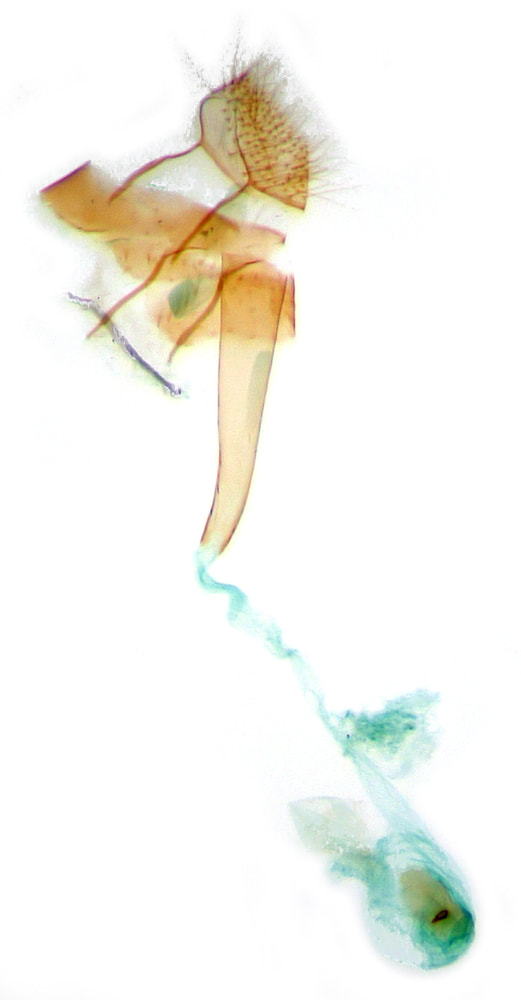15.049 Phyllonorycter spinicolella (Blackthorn Leaf-miner)
ws: 6.5-7.5mm; bivoltine May, Aug; blackthorn (Prunus spinosa), wild plum (Prunus domestica); common throughout UK.
ID: Group C - forewing markings appear white on a coloured background, C1D1 not forming a complete transverse fascia, thorax with a white median line; 4C3D; strigulae and basal streak with black edging; C1D1 angle acute, forewing brown; antenna whitish grey, marked fuscous, apical segment dark > P.cerasicolella / P.spinicolella - which need genital dissection to distinguish.
Note that in §2 only the posterior portion of the thoracic median line is present and its ground colour appears more orange than brown
Male genitalia: P.spinicolella has valvae with a short subapical spine and few weak marginal bristles; P.cerasicolella has valvae with a longer subapical spine and many stiff marginal bristles - the subapical spine in P.cerasicolella is almost as long as the distance fromt he base of the spine to the apex of the valva; in P.spinicolella the spine is shorter than half this distance.
Female genitalia: P.cerasicolella and P.spinicolella are shown at Moth Dissection and figured in MBGBI2 p324. They appear to be the only two Phyllonorycter species with a broad sclerotised antrum. In P.spinicollella the antrum does not extend beyond the anterior margin of segment 7, while in P.cerasicolella it does extend beyond this junction.
Note that in §2 only the posterior portion of the thoracic median line is present and its ground colour appears more orange than brown
Male genitalia: P.spinicolella has valvae with a short subapical spine and few weak marginal bristles; P.cerasicolella has valvae with a longer subapical spine and many stiff marginal bristles - the subapical spine in P.cerasicolella is almost as long as the distance fromt he base of the spine to the apex of the valva; in P.spinicolella the spine is shorter than half this distance.
Female genitalia: P.cerasicolella and P.spinicolella are shown at Moth Dissection and figured in MBGBI2 p324. They appear to be the only two Phyllonorycter species with a broad sclerotised antrum. In P.spinicollella the antrum does not extend beyond the anterior margin of segment 7, while in P.cerasicolella it does extend beyond this junction.
§1 Ham Fen, Kent; 22/05/2010; male; fw 3.5mm
§2 Orlestone Forest, Kent; 26/07/2019; female; fw 2.6mm
§3 New Forest, Hampshire; 15/07/2019; male; fw 3.0mm
§4 Covert Woods, Kent; 09/05/2022; female; fw 3.6mm
All images © Chris Lewis
§2 Orlestone Forest, Kent; 26/07/2019; female; fw 2.6mm
§3 New Forest, Hampshire; 15/07/2019; male; fw 3.0mm
§4 Covert Woods, Kent; 09/05/2022; female; fw 3.6mm
All images © Chris Lewis
Page published 03/01/2012 (§1) | text amended 25/08/2018 | §2 added and text amended 29/05/2019 | §3 added 27/02/2020 |
§4 added 10/08/2022
§4 added 10/08/2022
